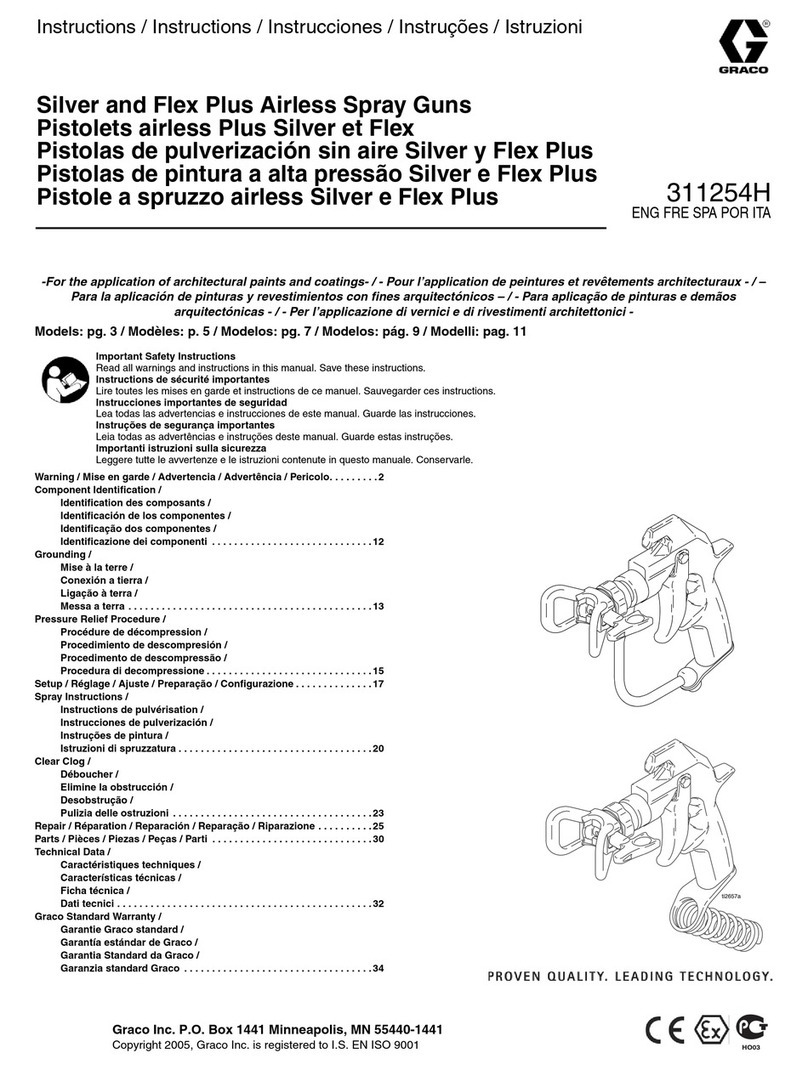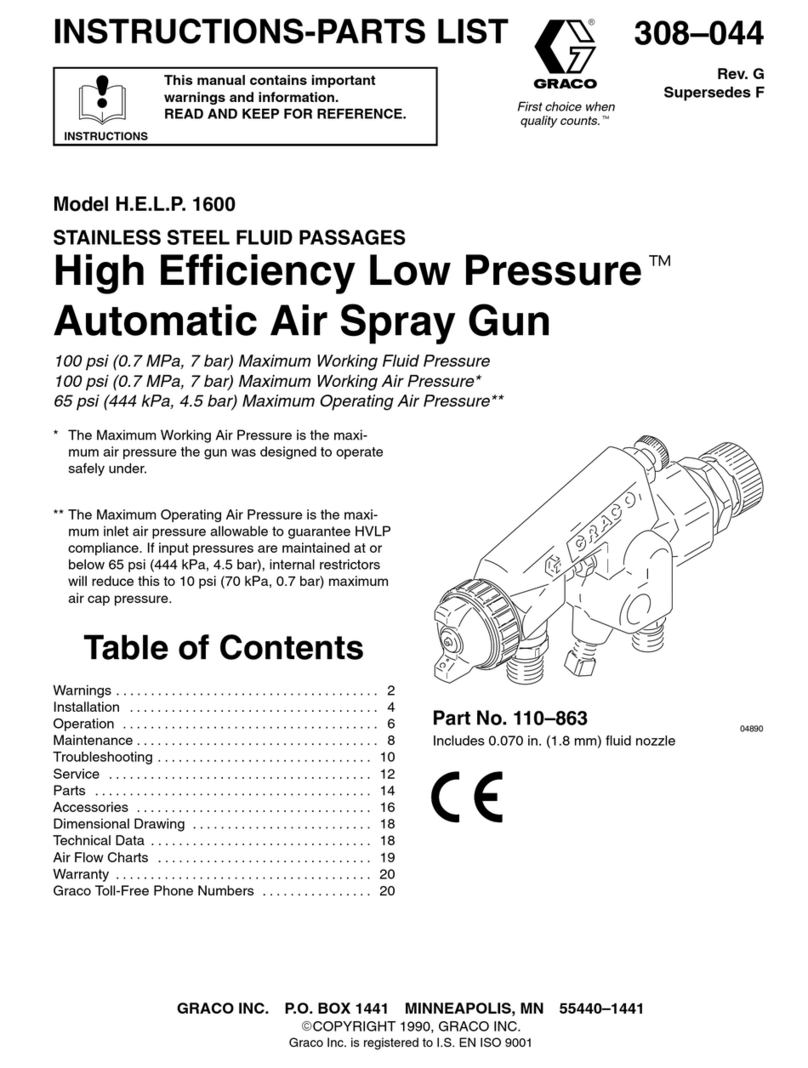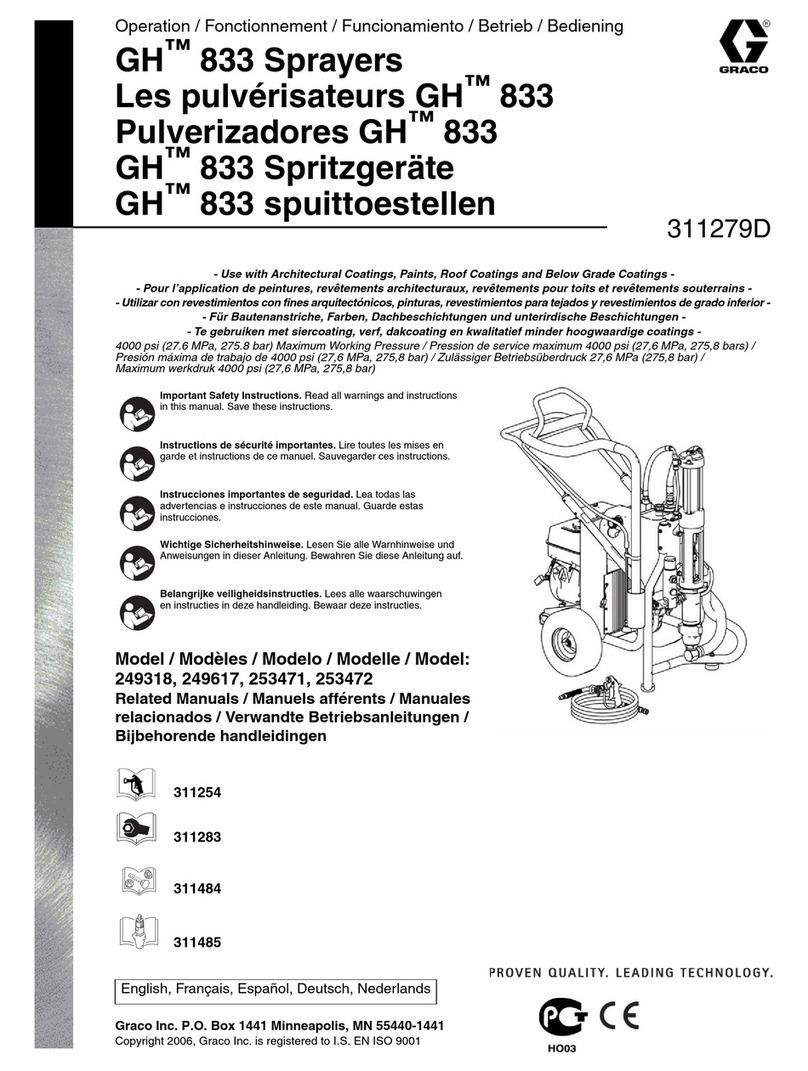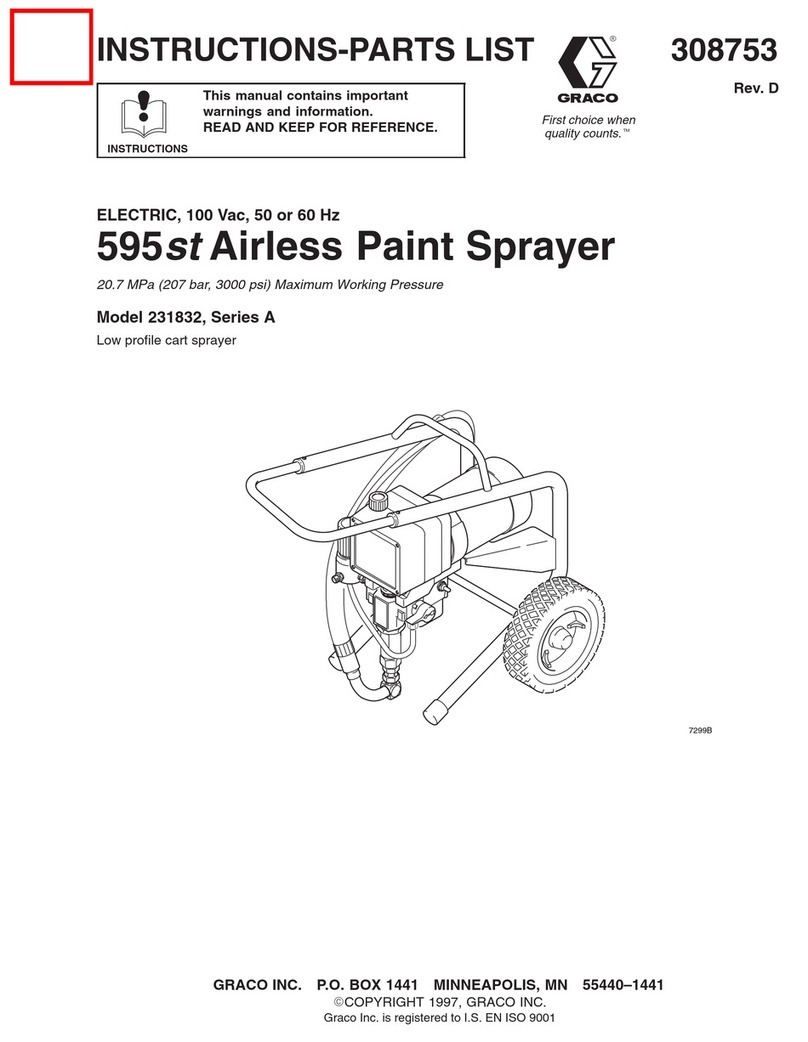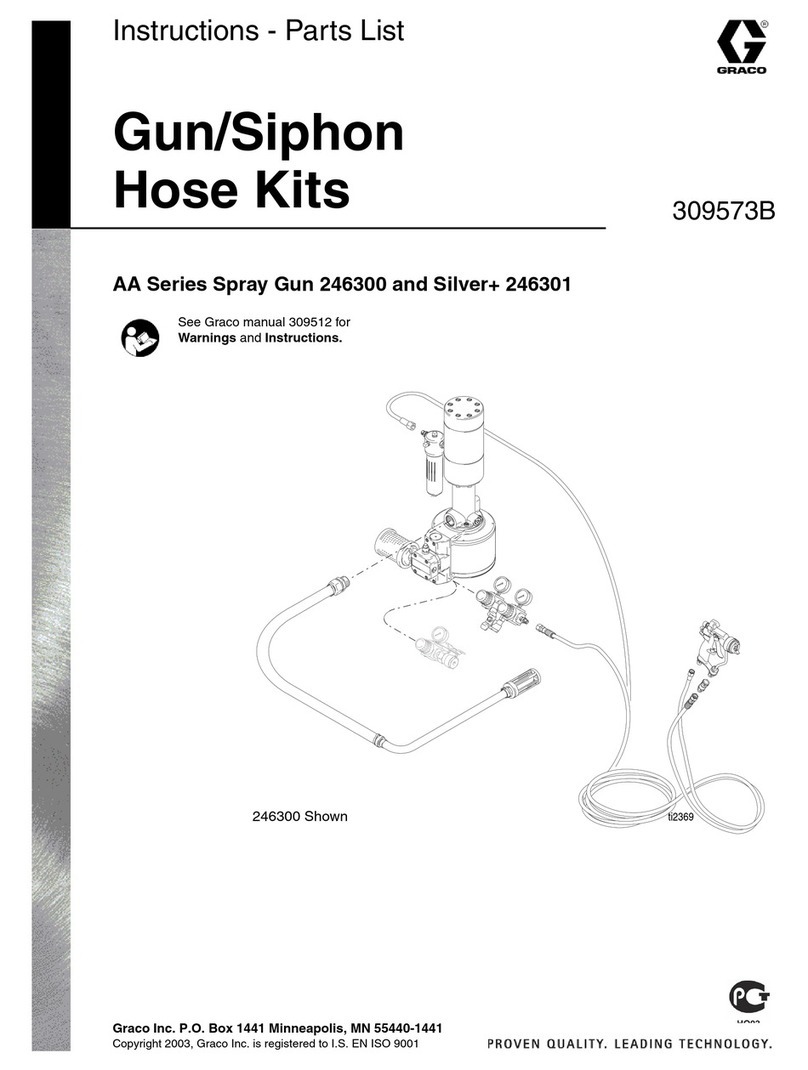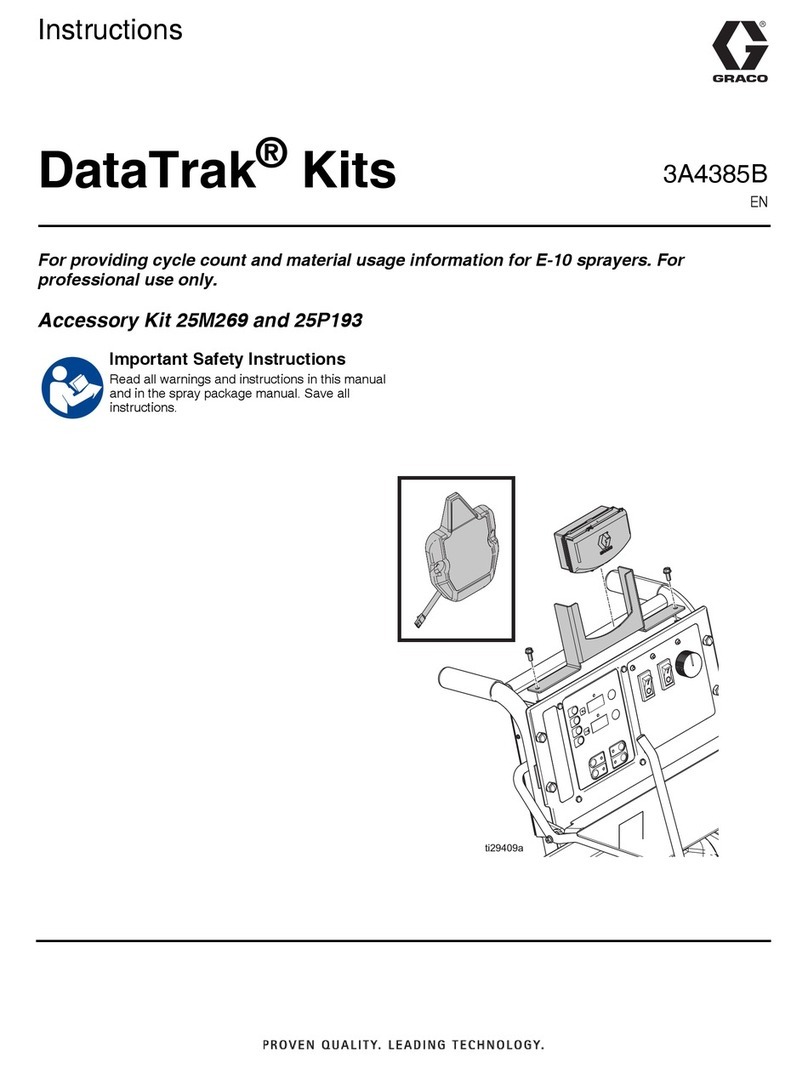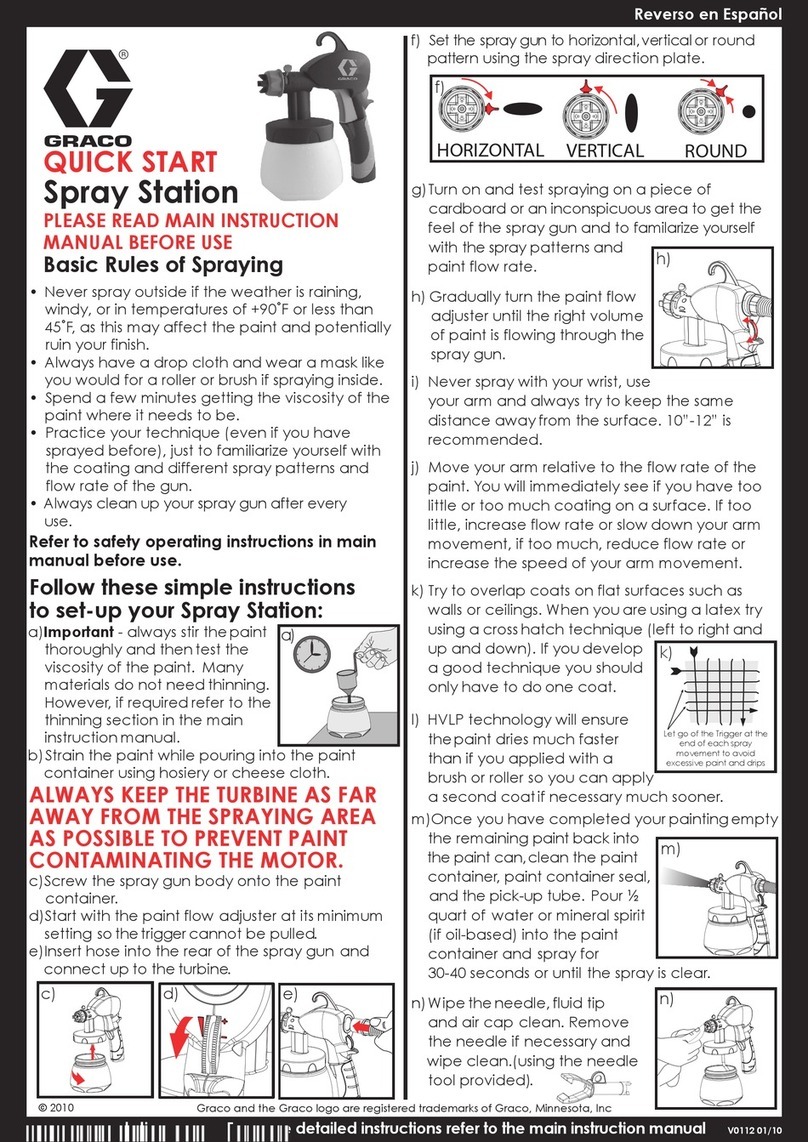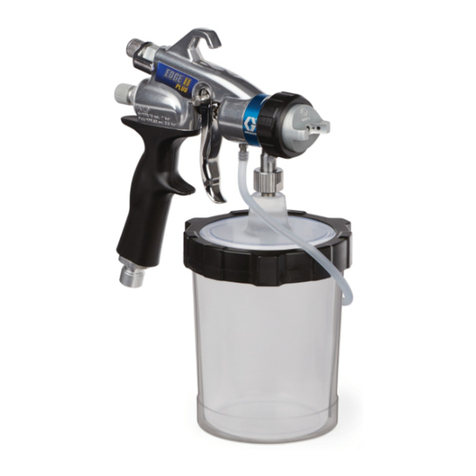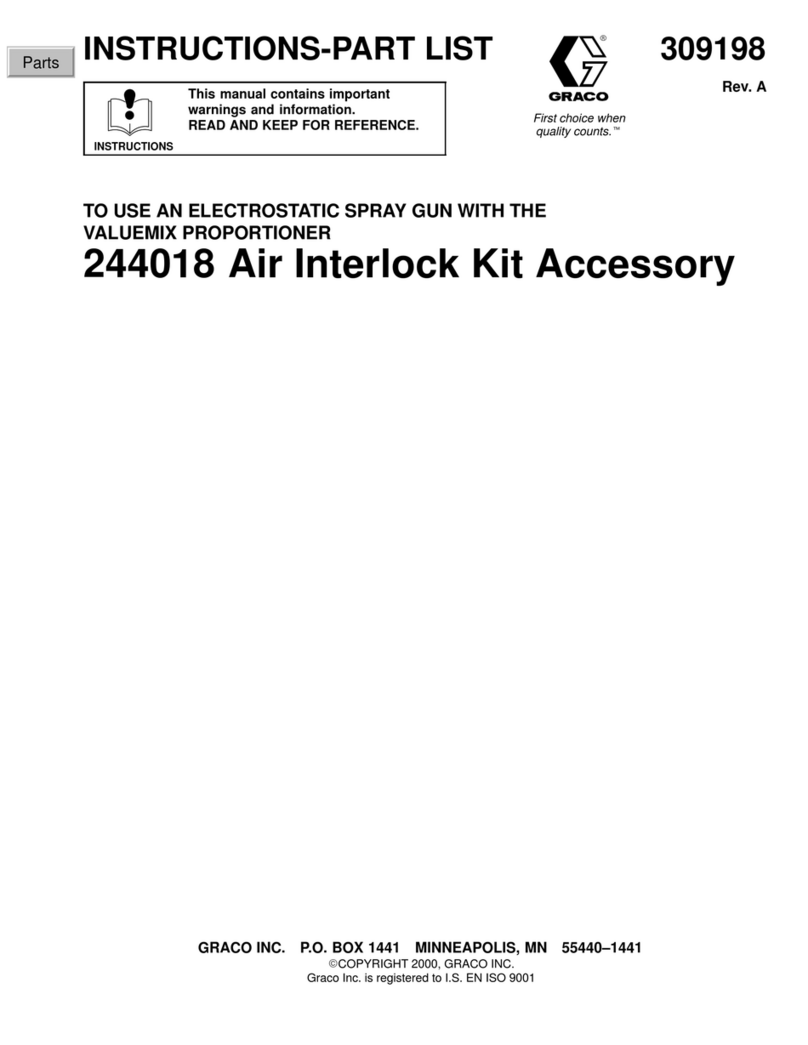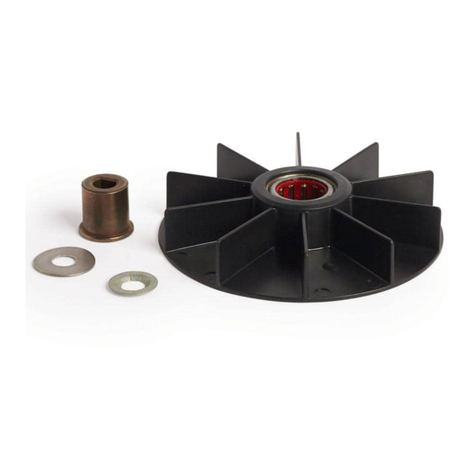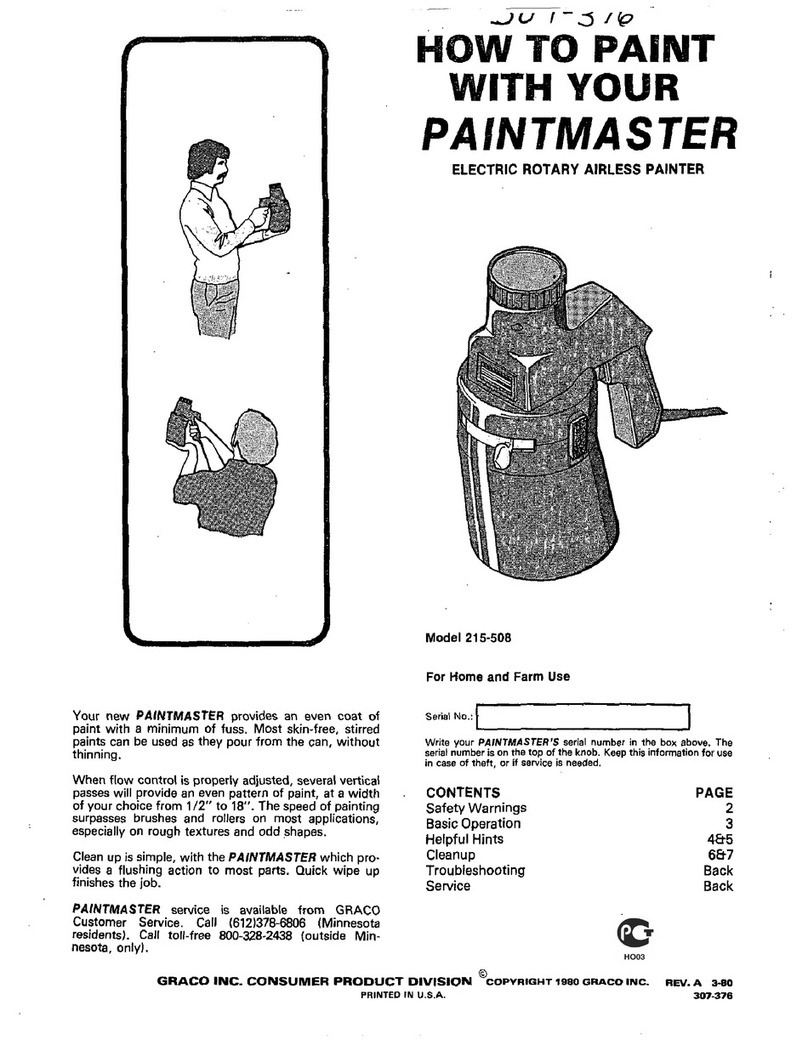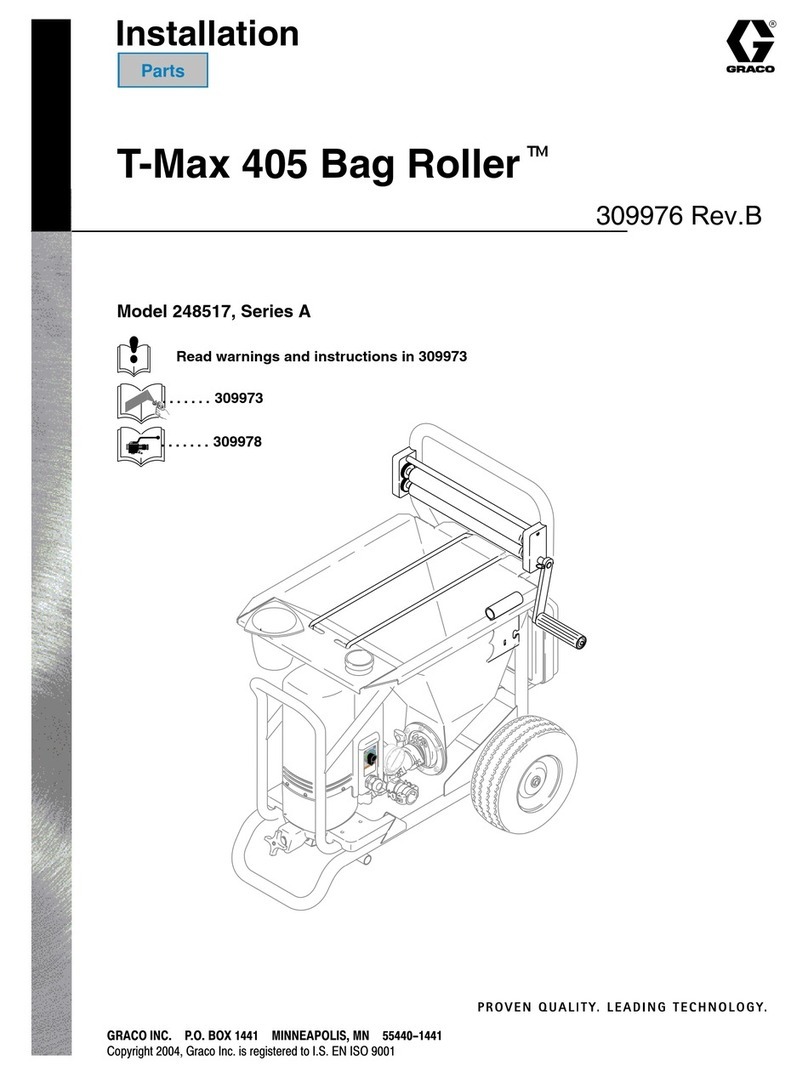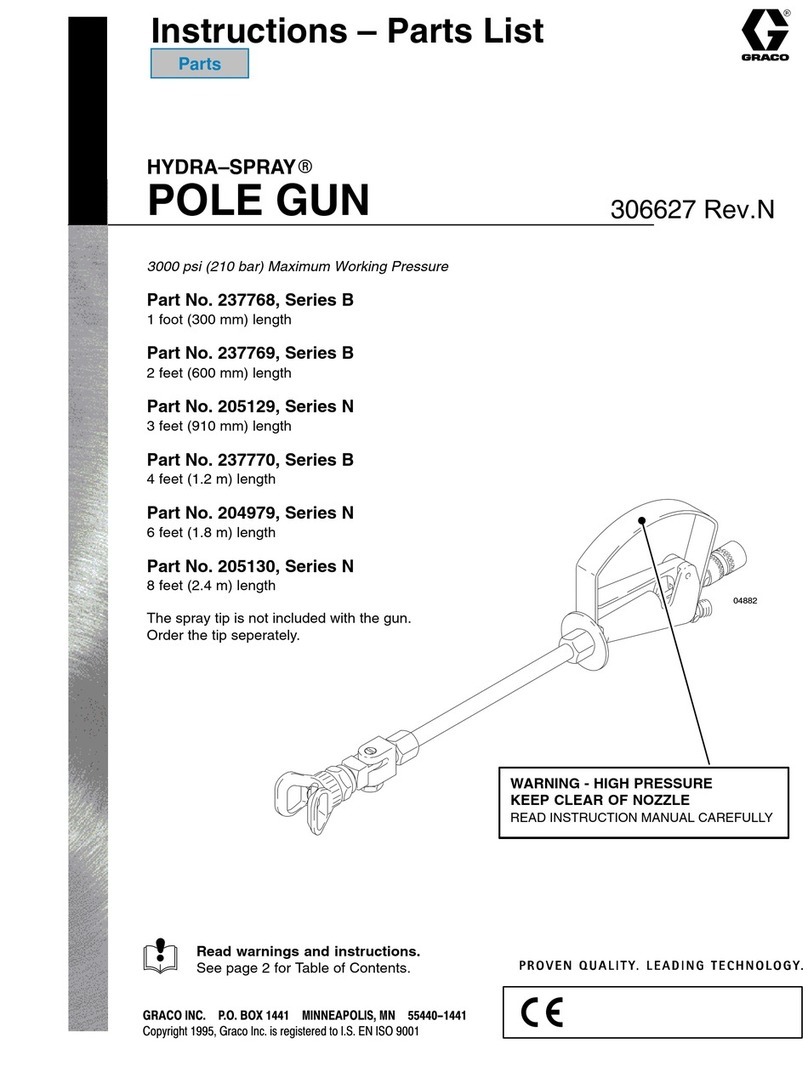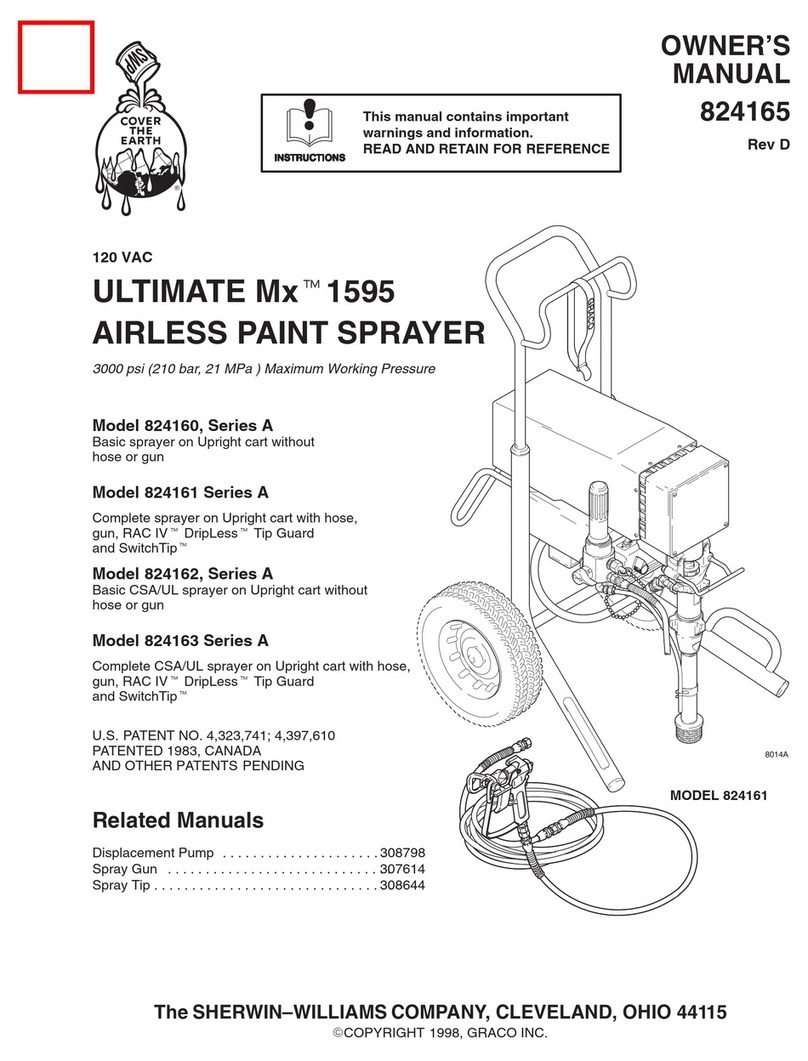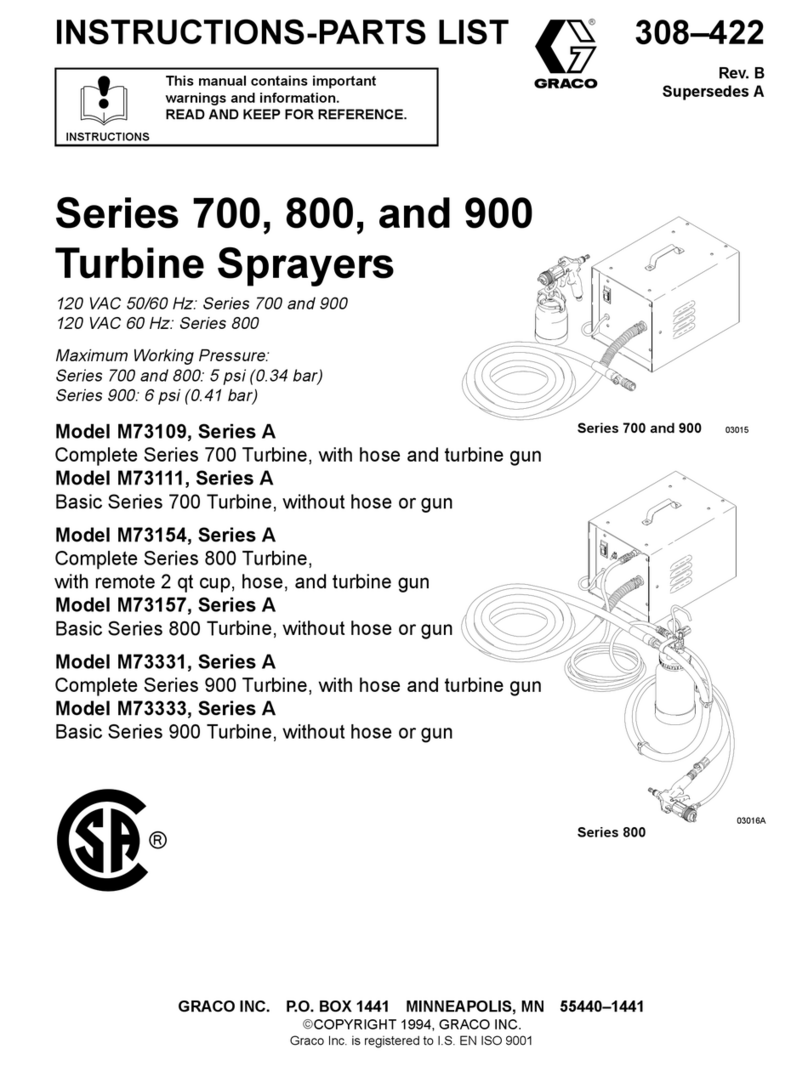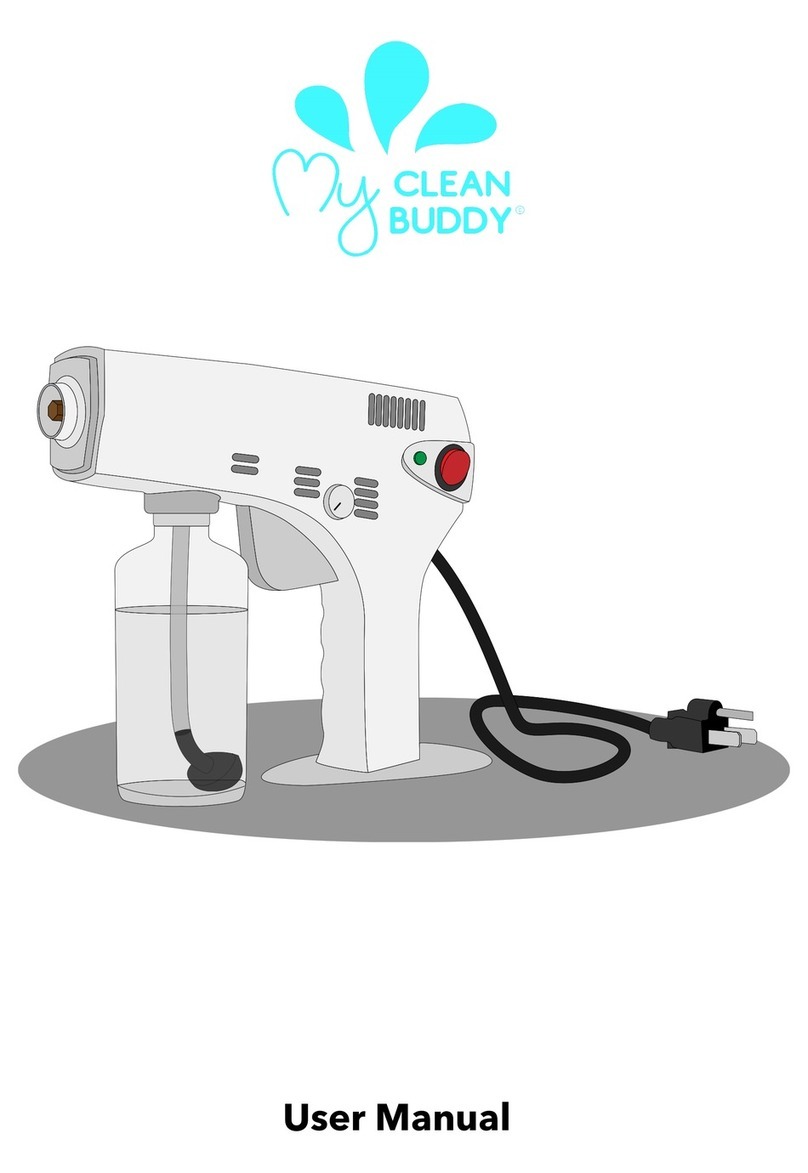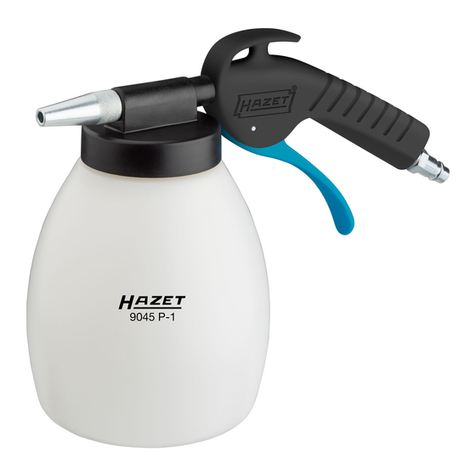
FIRE, EXPLOSION OR ELECTROSTA
TIC SHOCK HAZARD
To
reduce the risk of fire, explosion, or electrostatic shock,
which may result from electrical discharge, it is essential that:
S
All parts of the electrostatic system are properly grounded.
S
All personnel in or close to the spray area are properly
grounded.
S
All electrically conductive objects or devices in the spray
area, including paint containers, wash cans and tools, are
properly grounded.
When operating the electrostatic device, any ungrounded
objects in the spray area (such as people, containers, tools,
etc.) can become electrically charged. Arcing may occur if
these objects then come in contact or close to ground. Arcing
of suf
ficient energy levels can ignite the fluid being sprayed,
fumes
from solvents, dust
particles, and other flammable sub
-
stances.
This can cause a fire, explosion, or electrostatic
shock and result in serious injury and property damage.
Static electricity can also be generated by the flow of fluid
through the pump, hose, gun, and nozzle, but it is dissipated
through proper grounding as described in
Grounding
below
.
If you experience any arcing or feel even a slight shock,
stop
spraying immediately
. Check for proper grounding of the
entire system. Be sure you have corrected the problem
before starting to spray again.
Grounding
The following are minimum requirements for grounding a
basic electrostatic system. Y
our system may include other
equipment or objects which must also be grounded. Always
check your local electrical code for detailed grounding in
-
structions. Be sure your system is connected to a true earth
ground.
1.
Pump:
ground by using a ground wire and clamp as
described in your separate pump instruction manual.
2.
Air compressors and hydraulic power supplies:
ground
according to the manufacturer
’
s recommendations.
3.
Electrostatic Air Spray Gun:
obtain grounding through
connection to a properly grounded air supply hose. Use
only the Graco Electrically Conductive Air Supply Hose;
see
ACCESSORIES
section to order
. Connect the air
hose ground wire to a true earth ground.
4.
All air and fluid lines
must be properly grounded. Use only
grounded hoses with a maximum of 500 feet (150 m)
combined hose length to ensure grounding continuity:
Refer also to
Hose Grounding Continuity
on page 4.
5.
All electric cables
must be properly grounded.
6.
Object being sprayed:
keep the workpiece hangers clean
and grounded at all times. Contact points must be sharp
points or knife edges.
7.
All electrically conductive objects or devices
in the spray
area, including paint containers and wash cans, must be
properly grounded.
8.
All persons entering the spray area:
shoes must have
conductive soles, such as leather
, or personal grounding
straps must be worn. Rubber or plastic soles are not con
-
ductive. The operator must not wear gloves that insulate
the hand from the spray gun. The gloves must be
conduc
-
tive or modified as shown in Fig 2, page 9.
9.
The floor of the spray area
must be electrically conductive
and grounded. Do not cover the floor with cardboard or
any non-conductive material which would interrupt
grounding continuity
.
10.
Flammable liquids
in the spray area must be kept in
approved, grounded containers. Do not store more than
the quantity needed for one shift.
11.
All solvent pails:
use only grounded metal pails, which are
conductive. Do not place the pail on any non-conductive
surface, such as cardboard or paper
, which would inter
-
rupt grounding continuity
.
Flushing and Cleaning Safety
To
reduce the risk of fluid injection injury
, static sparking or
splashing, always follow the
Pressure Relief Procedure
on
page 2 and remove the spray tip before flushing. Use the
lowest possible pressure to flush. T
rigger the gun into a
grounded metal waste container
.
Be sure the ES ON-OFF lever is OFF before flushing or
cleaning any part of the spray system.
To
flush or purge equipment,
always use solvents with a flash
point equal to or greater than that of the fluid being sprayed.
T
o clean the exterior of the equipment,
always use solvents
with a flash point of higher than 100
_
F (38
_C).
Always
remove all solvent from the system before reactivat
-
ing the spray gun.
Use only non-sparking tools to clean residue from the booth
and hangers.
Ventilate
the Spray Booth
To
prevent hazardous concentrations of toxic and/or flam
-
mable vapors, spray only in
a properly ventilated spray booth.
Check and follow all National, State and Local codes regard
-
ing air exhaust velocity requirements. Check and follow all
local safety and fire codes and OSHA standard 1910.107.
Never operate the spray gun unless the ventilating fans are
operating.
